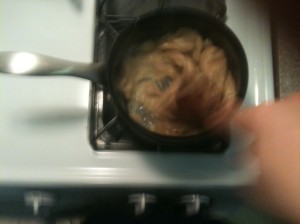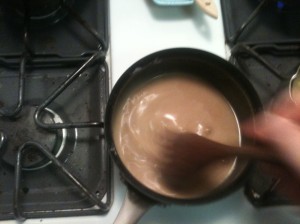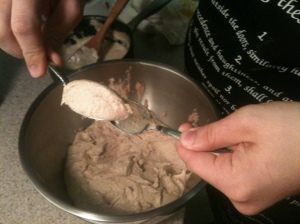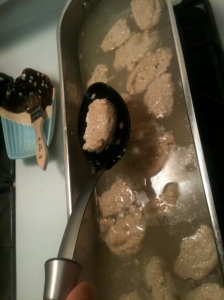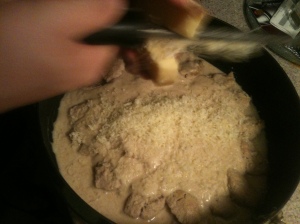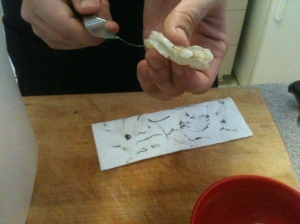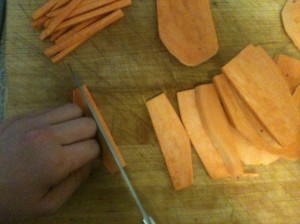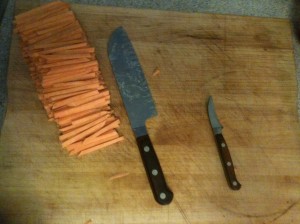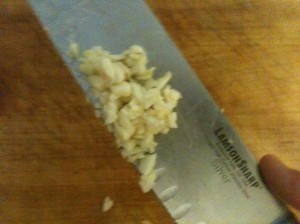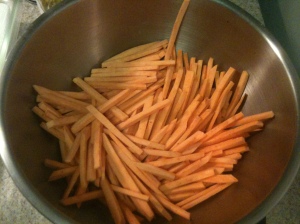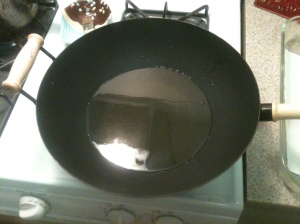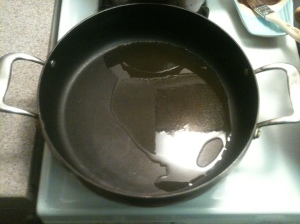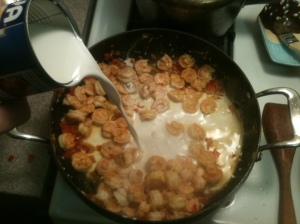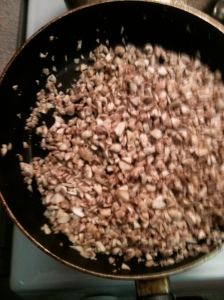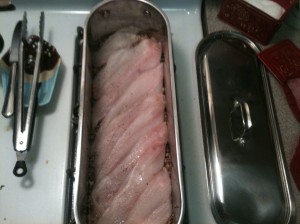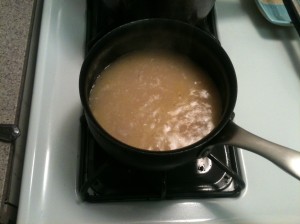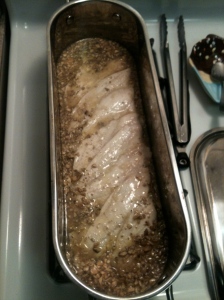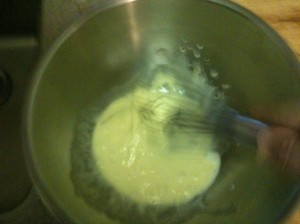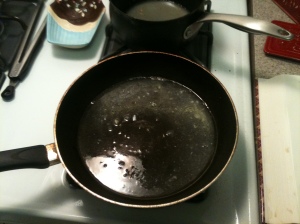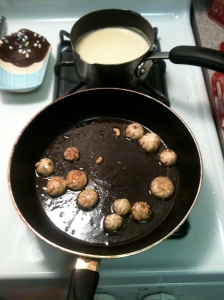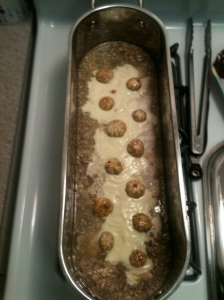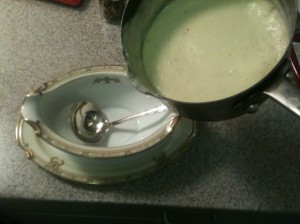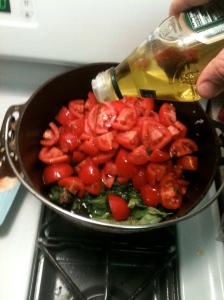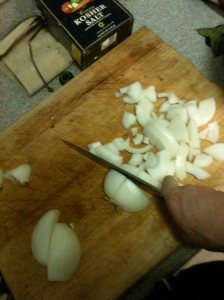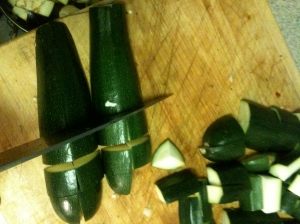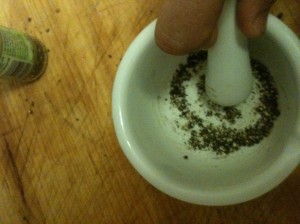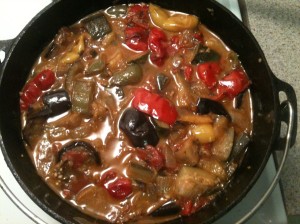Fish quenelles, or more specifically quenelles gratinéed in white wine sauce is a standard luncheon dish served across France, but most notably at the cafes and bistros of Paris. The delicate, saline quality of the white fish (traditionally Pike) is extracted and extrapolated upon with the influence of black truffles, pepper, butter, cream, and gruyere.
The richness of the dish sheds light on why the French are notorious for their small portions, but the richness of the dish sheds absolutely no light on their small proportions (which they are equally notorious for). How a culture can turn heavy cream, decadent amounts of butter, and every form of fat and sugar available into something consistently light and refreshing is beyond the scope of science to explain. All I can say is this dish will make you sublimely happy and will transform a few sad little cans of tuna sitting in the back of your cupboard into an entrée worthy of ironing a tablecloth for. Chill your most mineral-rich dry white wine and loosen your belt just a notch. Bon appétit!
Ingredients
For the quenelles:
Coarse kosher salt
Ground white pepper
4 tablespoons of butter
3/4 cup flour
2 large eggs
1 1/4 pounds well-chilled skinless lean white fish, drained well if taken from a can
1-8 tablespoons of heavy cream
2 tablespoons of chopped black truffle
For the sauce and the Gratiné
5 tablespoons of butter
7 tablespoons of flour
1 1/2 cups simmering whole milk
1 1/2 cup simmering white wine fish stock, or a combination of equal parts white wine, dry vermouth, and the juice from tuna cans, clam juice, or something of the like combined with a clove of garlic, two slices of lemon, chopped shallot or white onion, salt, pepper, and butter
Kosher salt
ground white pepper
Approximately 1 cup of heavy whipping cream
the juice of two lemons
Approximately 3 tablespoons of grated Gruyère cheese
1 tablespoon of butter cut into pea-sized dots
Preparation
1. Prepare the pâte à choux

Measure out 4 tablespoons of butter. I am using this very nice French butter as a sort of experiment to see if using a local butter relative to the dish I'm preparing has any effect on the final product...here's a clue: it totally does.

place the saucepan into a bowl of ice water and continue to stir for about four minutes until well-chilled.
2. Prepare the fish to be puréed

Thoroughly drain the juice from each can of tuna into a receptacle and reserve for use as a substitute for white wine fish stock
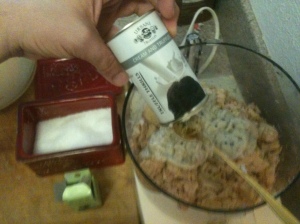
Add the cream, truffles, white pepper, and kosher salt. If you don't have whole black truffles on hand (if you do I'll be surprised, impressed, and will probably want to be your friend) Whole Foods has a nice, relatively inexpensive alternative in the form of black truffle shavings in cream. It's $13.00 per can but when you compare it to the hundreds you would spend on whole truffles it's a steal and since the recipe calls for cream as it is your can replace a portion of the cream called for with the cream in the container and supplement it with extra cream as necessary.

test a spoonful in a pot of lightly simmering water. Simmer for a minute or two, taste, and take note of what is missing texture and flavor-wise.

If the mixture feels too dense add a little more cream, but it is far better to have too little cream versus having too much cream when it comes time to form your quenelles. Adjust the seasoning by adding more salt or white pepper. The key is to have the spices extract the flavor of the truffles without overpowering them.
3. Prepare the sauce

Combine equal parts white wine, dry vermouth, and drained tuna water with the crushed clove of garlic, two slices of lemon, white pepper and salt to taste, and about three tablespoons of butter. Transfer to a medium saucepan over high heat

Prepare a blonde roux by combining the butter and flour over medium heat. Take care not to color the roux. My example is dark brown because in a feeble attempt to make this dish "healthy" I used whole-grain whole-wheat flour.
4. Prepare the quenelles

Over low/medium-low heat bring half fish stock replacement and half salted water to a very, very low simmer
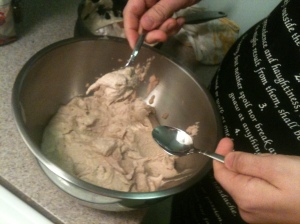
To prepare the fish quenelles take two teaspoons in your hands and fill one slightly with the fish purée

Poach the quenelles for about 20 minutes, take care that the poaching liquid remains just below a simmer. If the simmer gets too vigorous the quenelles will break apart and dissolve

The layout of the quenelles should be tight and visually appealing, in a design appropriate to the relative shape of your pan. THis dish will be served in-pan at the table.








